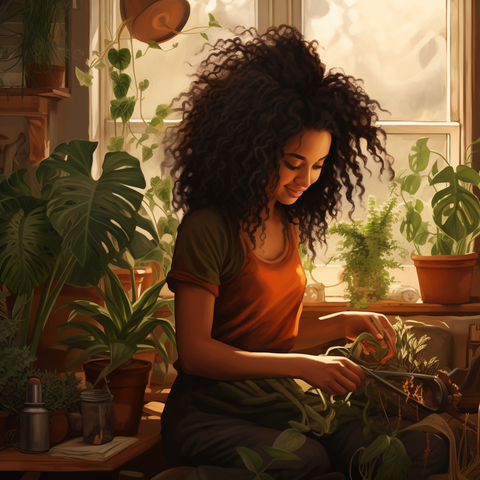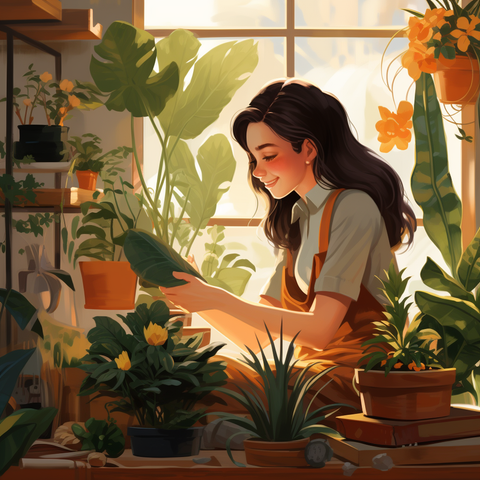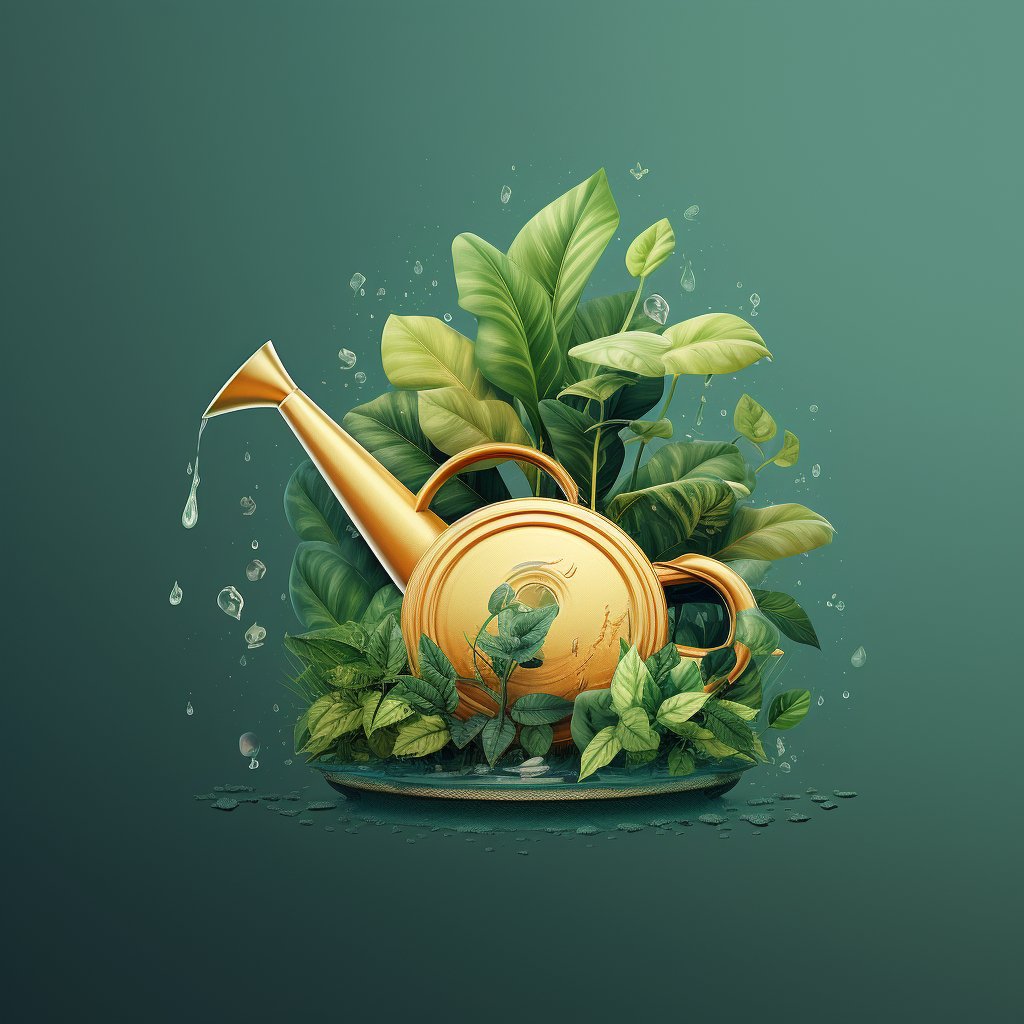Introduction
Indoor plants, those lush, green companions that bring life and vibrancy into your living spaces, are not just decorative elements. They are living organisms that rely on proper care and nurturing to thrive. A significant part of this care involves watering, a seemingly straightforward task that often perplexes even the most experienced plant enthusiasts. In this comprehensive guide, we will embark on a journey to demystify the science of watering indoor plants, leaving no leaf unturned.
Why Proper Watering Matters
Before we delve into the intricate world of indoor plant hydration, let's take a moment to understand why it is of paramount importance.
Maintaining Optimal Plant Health
Indoor plants, like any living organism, require water for their survival. Water is the lifeblood of plants, facilitating vital processes such as photosynthesis and nutrient absorption. Ensuring that your indoor plants receive the right amount of water is crucial for their overall health and well-being.
Preventing Overwatering
While water is essential, too much of it can be as harmful as too little. Overwatering, a common mistake made by many plant owners, can lead to root rot and other issues. By unraveling the science behind watering, we can equip ourselves with the knowledge needed to prevent this pitfall.

The Basics of Indoor Plant Watering
Understanding Plant Types
One of the fundamental principles of successful indoor plant care is recognizing that different plants have unique watering needs. Succulents, for example, have evolved to thrive in arid conditions and require infrequent watering, while ferns prefer consistently moist soil. To crack the code of perfect watering, it is essential to acquaint yourself with the specific requirements of each plant species in your collection.
The Role of Soil
Soil, the medium in which your plants are rooted, plays a pivotal role in water management. The type of soil you use and its composition significantly affect water retention and distribution to the plant's roots. Throughout this article, we will explore the ideal soil conditions for various indoor plants, shedding light on how the right soil can make a substantial difference in their health and vitality.
Frequency Matters
Discovering the right watering frequency is a key aspect of indoor plant care. Some plants thrive when they receive deep, infrequent watering, allowing their roots to access water deep within the soil. In contrast, other plants prefer shallow, frequent watering to maintain consistent moisture levels. To crack the code of perfect watering, you must understand the specific needs of each plant in your collection and tailor your watering schedule accordingly.

The Science Behind Water Absorption
Roots and Capillary Action
At the heart of the science of watering lies a fascinating process known as capillary action. This phenomenon involves the movement of water through small spaces, such as the tiny channels within the roots of your indoor plants. Understanding how capillary action works and how it facilitates water absorption by plant roots is essential for becoming a proficient indoor gardener.
Transpiration
Transpiration, often referred to as the "breathing" of plants, is another critical aspect of the science of watering. It is the process by which plants release water vapor through tiny pores in their leaves. This not only aids in cooling the plant but also contributes to the transportation of essential nutrients from the roots to the upper parts of the plant. By gaining insights into transpiration, you can gain a deeper appreciation for the role of water in your plant's overall health.

Signs of Underwatering and Overwatering
Recognizing Underwatering
As a dedicated plant parent, it is vital to be attuned to the subtle signs of distress your indoor plants may exhibit when they are not receiving adequate water. From drooping leaves to dry soil, we will delve into the unmistakable indicators of underwatering and explore strategies to rectify the situation promptly.
Identifying Overwatering
On the flip side, overwatering can be equally detrimental to your indoor plants. Understanding the signs of overwatering, such as yellowing leaves and the dreaded root rot, is crucial to preventing irreparable damage. We will equip you with the knowledge needed to identify and address overwatering issues effectively.

The Right Way to Water
Choosing the Right Water
The quality of water you use can significantly impact the health of your indoor plants. While tap water is readily available to most, it may contain impurities that can accumulate in the soil over time. We will explore various water sources, treatment options, and the use of distilled water to ensure your plants receive the purest hydration possible.
Techniques for Watering
Watering is not just about pouring water into the pot. It involves a range of techniques, from top watering to bottom watering, each with its advantages and ideal use cases. By mastering these techniques, you can tailor your watering approach to meet the specific needs of each plant in your indoor garden.
Using Proper Containers
The choice of pots and containers for your indoor plants can significantly influence their hydration levels. We will guide you through the selection process, helping you choose containers that promote healthy root development and efficient water distribution.

Factors Influencing Watering
Light and Temperature
Light and temperature are dynamic factors that affect your indoor plant's water requirements. We will explore how varying levels of light and temperature can impact your watering routine, providing you with the knowledge needed to adapt to changing conditions.
Seasonal Adjustments
As the seasons change, so do the needs of your indoor plants. Understanding how to adjust your watering routine to accommodate seasonal variations is a crucial skill for every plant enthusiast. We will provide season-specific tips to ensure your plants thrive year-round.

The Role of Technology: Quench Moisture Meter
While the science of watering indoor plants is indeed fascinating, technology has taken plant care to the next level. One invaluable tool that every indoor gardener should consider is the Quench moisture meter.
Monitoring Soil Moisture
The Quench moisture meter is a device designed to monitor the moisture level in your plant's soil continuously. It eliminates the guesswork associated with watering by providing real-time data on whether your plants need water or not.
How Quench Works
This innovative device utilizes advanced sensor technology to measure soil moisture accurately. It is inserted into the soil, where it continuously assesses moisture levels. When the soil becomes too dry, just listen for Quench, letting you know it's time to water your plants.
Simplifying Plant Care
With Quench, you no longer need to rely on your intuition or constantly check the soil with your fingers. This smart technology takes the guesswork out of indoor plant care, ensuring that your plants receive the perfect amount of water, every time.

Conclusion
Cracking the code to perfectly watering your indoor plants is both an art and a science. By recognizing the unique needs of your plants, understanding the role of soil and the fascinating processes of capillary action and transpiration, mastering the techniques of watering, and incorporating advanced tools like the Quench moisture meter into your plant care arsenal, you can nurture a thriving indoor garden with confidence and precision.
Incorporating these insights into your plant care routine will not only enhance their health but also provide you with the satisfaction of being a successful plant parent, capable of deciphering the language of your beloved green companions with the help of modern technology.
FAQs (Frequently Asked Questions)
-
How often should I water my indoor plants?
- The frequency of watering depends on the plant type and environmental factors. As a general rule, water when the top inch of soil feels dry. Consider using a Quench moisture meter for precise guidance.
-
Is it better to underwater or overwater indoor plants?
- Neither extreme is ideal. Strive for balanced watering to maintain plant health. A Quench moisture meter can help you avoid both overwatering and underwatering.
-
Can I use distilled water for my indoor plants?
- Yes, distilled water is a suitable option, especially if your tap water contains minerals that could accumulate in the soil over time. Use a Quench moisture meter to ensure your plants receive the right amount of hydration.
-
What should I do if my indoor plant has root rot from overwatering?
- Trim affected roots, repot the plant in fresh soil, and adjust your watering habits to prevent further issues. A Quench moisture meter can assist you in maintaining the correct soil moisture level.
-
How does the Quench moisture meter work?
- The Quench moisture meter utilizes advanced sensor technology to continuously measure soil moisture. It alerts you when the soil becomes too dry, ensuring your plants receive the optimal amount of water.
Remember, successful indoor plant care is a dynamic journey that combines the art of nurturing with the science of understanding plant needs. By embracing both traditional wisdom and modern technology, you can create a thriving indoor oasis that not only enhances your living space but also brings you joy and satisfaction as a dedicated plant parent.
So, go ahead, embark on this green adventure, and let your indoor plants flourish under your expert care, guided by the science of watering and the precision of tools like the Quench moisture meter. Your plants will thank you with lush foliage, vibrant blooms, and a touch of nature's beauty right in your home.


